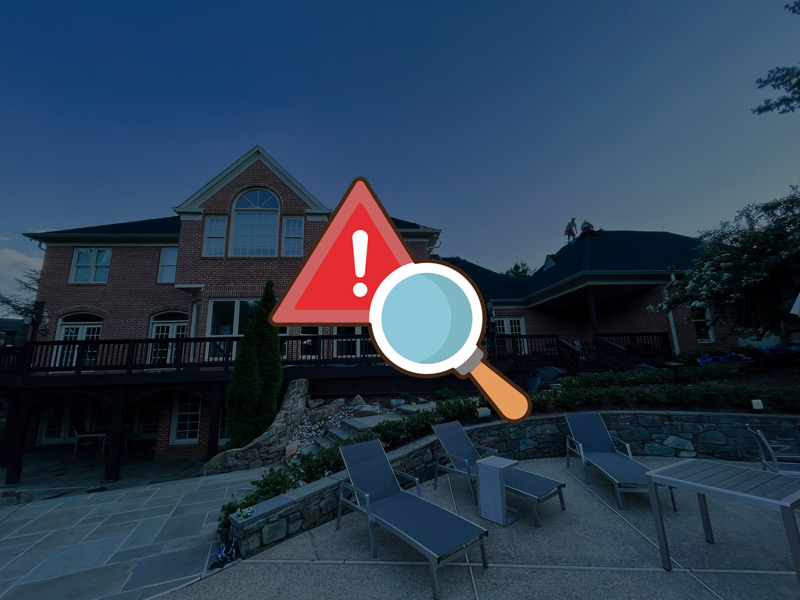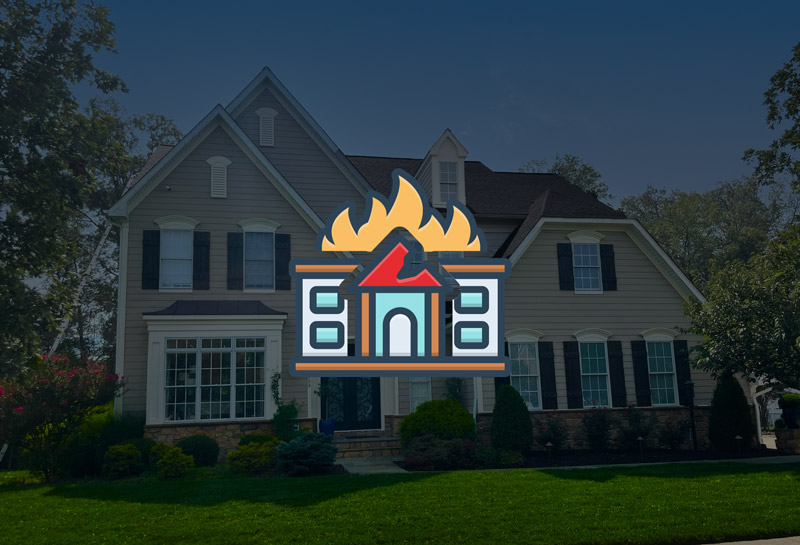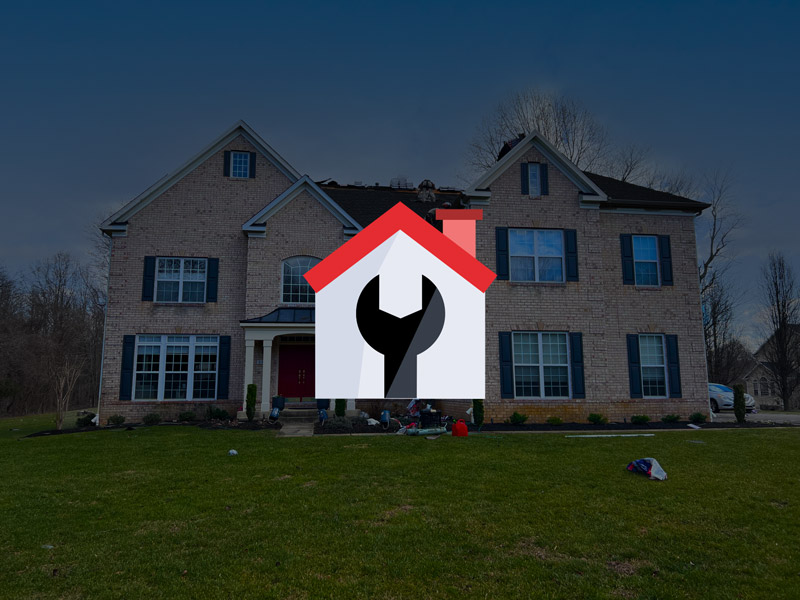Roof Only Leaks in Heavy Rain: Causes and Prevention
Roof leaks during heavy rain can be a homeowner’s nightmare, causing not only immediate damage but potential long-term issues like mold and structural damage. Understanding the reasons behind these leaks is essential for homeowners to protect their investment and ensure a safe living environment.

Identifying the Signs of a Roof Leak
Water Stains and Discoloration on Ceilings and Walls
One of the primary indicators that your roof may be leaking during heavy rain is the appearance of water stains and discoloration on your ceilings and walls. These unsightly marks are often a result of water seeping through the roof and into your home’s interior. Keep an eye out for brown, yellow, or grayish stains, as they can signal an ongoing issue with your roof’s integrity. Addressing these stains promptly is crucial to prevent further damage.
Dripping or Water Trickling Inside During Heavy Rainfall
A more obvious sign of a roof leak during heavy rain is the presence of actual water inside your home. If you notice dripping or water trickling down from your ceiling, it’s a clear indication that your roof is compromised. Don’t ignore this warning; take immediate action to locate and address the source of the leak to prevent further water damage and potential structural issues.
Mold and Mildew Growth
Roof leaks that go unnoticed or untreated can create the perfect environment for mold and mildew growth. If you detect musty odors or see dark patches of mold on your ceilings or walls, it’s a sign that moisture from heavy rain is infiltrating your home through the roof. Mold not only damages your home but can also pose health risks, so it’s crucial to tackle the issue promptly.
Sagging or Damaged Areas on the Ceiling
In some cases, a roof leak during heavy rain can lead to the ceiling sagging or showing visible signs of damage. This occurs when water accumulates in the ceiling materials, causing them to weaken and deform. If you notice any sagging or visible damage on your ceiling, it’s essential to act swiftly to address the leak and prevent further deterioration of your home’s structure.

Causes of Roof Leaks in Heavy Rain
Roof Age and Wear and Tear
The age of your roof plays a significant role in its susceptibility to leaks during heavy rain. Over time, exposure to the elements, temperature fluctuations, and UV radiation can cause roofing materials to deteriorate. This natural wear and tear can lead to cracks, holes, and weakened areas that allow water to penetrate during heavy downpours. Regular roof inspections, especially for older roofs, are crucial to identify and address these issues.
Missing or Damaged Shingles and Tiles
One of the most common reasons for roof leaks in heavy rain is missing or damaged shingles and tiles. These roofing materials act as the first line of defense against rainwater. When they are cracked, broken, or entirely missing, water can easily find its way into your home. Regularly inspect your roof for any signs of damaged shingles or tiles and replace them promptly to maintain the integrity of your roof.
Inadequate Flashing and Sealant
Flashing and sealant are essential components that help waterproof vulnerable areas of your roof, such as the intersections between the roof and chimneys, vents, or skylights. When flashing becomes corroded or sealant deteriorates, it creates openings for water to seep through during heavy rain. Ensuring that flashing and sealant are in good condition is vital to prevent leaks in these vulnerable areas.
Clogged Gutters and Downspouts
Clogged gutters and downspouts can contribute to roof leaks during heavy rain in unexpected ways. When debris accumulates in your gutters, it can block the flow of water, causing it to overflow and potentially seep under your roofing materials. Regular gutter cleaning is a simple yet effective preventive measure to keep rainwater flowing away from your roof as it should.
Poor Attic Ventilation and Insulation
Inadequate attic ventilation and insulation can indirectly lead to roof leaks in heavy rain. When your attic lacks proper ventilation, it can trap moisture, creating a humid environment. Over time, this moisture can compromise your roof’s structural integrity and cause leaks. Well-maintained attic ventilation and insulation can help regulate moisture levels and prevent this issue.

The Role of Roof Pitch and Design
How Roof Slope Affects Water Drainage
The pitch or slope of your roof has a significant impact on its ability to handle heavy rain. Roofs with a steeper pitch tend to shed water more effectively, preventing it from pooling or seeping through roofing materials. When heavy rain falls on a roof with a shallow pitch, there is a higher risk of water accumulation, which can lead to leaks. Roof designs that incorporate a steeper pitch are generally better equipped to handle heavy rain, ensuring that water flows away efficiently.
The Importance of a Well-Designed Drainage System
A well-designed drainage system is crucial in preventing roof leaks during heavy rain. This system includes gutters, downspouts, and proper grading around your home. Gutters collect rainwater and direct it away from the roof’s edge, preventing it from seeping into the structure. Downspouts then channel the water safely to the ground, where it is directed away from your foundation. Additionally, the grading around your home should promote water runoff away from the structure, minimizing the risk of water infiltration.
Choosing the Right Roofing Materials for Your Climate
The choice of roofing materials also plays a pivotal role in preventing leaks during heavy rain. Some roofing materials are better suited for specific climates than others. For regions prone to heavy rainfall, it’s essential to select materials that offer superior water resistance and durability. Asphalt shingles, metal roofing, and clay tiles are common choices that can effectively protect your home against heavy rain. Consider consulting with a roofing professional to determine the best material for your climate and weather conditions.

Preventing Roof Leaks in Heavy Rain
Regular Roof Inspections and Maintenance
Regular roof inspections and maintenance are your first line of defense against roof leaks during heavy rain. Scheduling annual or semi-annual inspections by a professional roofing contractor can help detect and address potential issues before they become major problems. During these inspections, the roofer will check for signs of damage, missing or loose shingles, deteriorating sealant, and other vulnerabilities. Timely repairs and maintenance can extend the lifespan of your roof and keep it resilient against heavy rain.
Replacing Damaged or Missing Shingles and Tiles
Damaged or missing shingles and tiles are common culprits behind roof leaks in heavy rain. When these components are compromised, they expose your roof to the elements, allowing water to seep in. Promptly replacing any damaged or missing roofing materials is essential to maintain the integrity of your roof. By addressing these issues as they arise, you can prevent leaks and further damage to your home.
Cleaning Gutters and Downspouts
Clean gutters and downspouts are essential for proper water drainage and prevention of roof leaks. Regularly remove debris, leaves, and dirt from your gutters to ensure rainwater can flow freely. Clogged gutters can lead to water overflow, which may find its way under your roofing materials, causing leaks. By keeping your gutters and downspouts clean and well-maintained, you can significantly reduce the risk of heavy rain-related roof leaks.
Ensuring Proper Attic Ventilation and Insulation
Proper attic ventilation and insulation are indirect but crucial factors in preventing roof leaks during heavy rain. Inadequate ventilation can lead to moisture buildup in the attic, potentially compromising your roof’s structural integrity. Proper insulation helps regulate temperature and humidity in the attic, preventing the formation of ice dams and reducing the risk of leaks. Ensuring your attic is well-ventilated and insulated can contribute to a leak-free roof.
Professional Roof Waterproofing Options
For homeowners in regions prone to heavy rainfall, professional roof waterproofing options can provide an added layer of protection. These options include applying waterproof coatings or sealants to your roof’s surface. While not always necessary, they can be particularly beneficial for older roofs or in areas with extreme weather conditions. Consulting with a roofing professional can help you determine whether roof waterproofing is a suitable preventive measure for your home.
View More Articles
Please Share!










